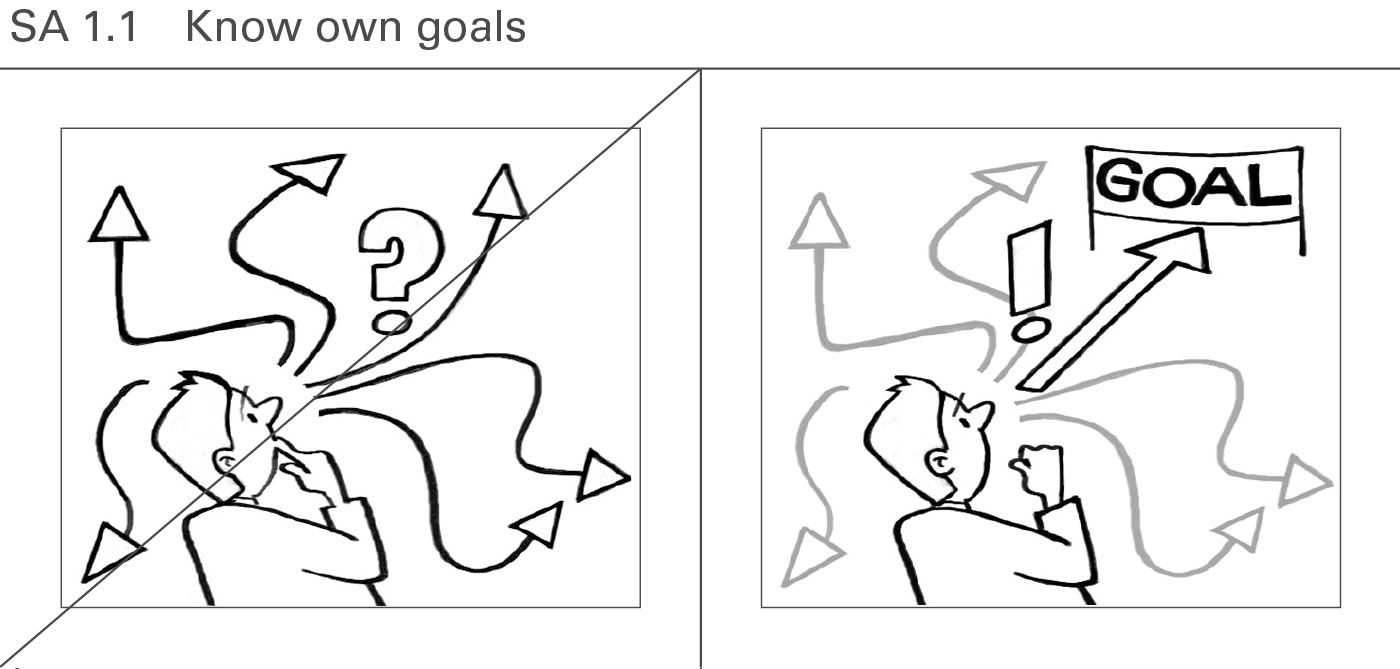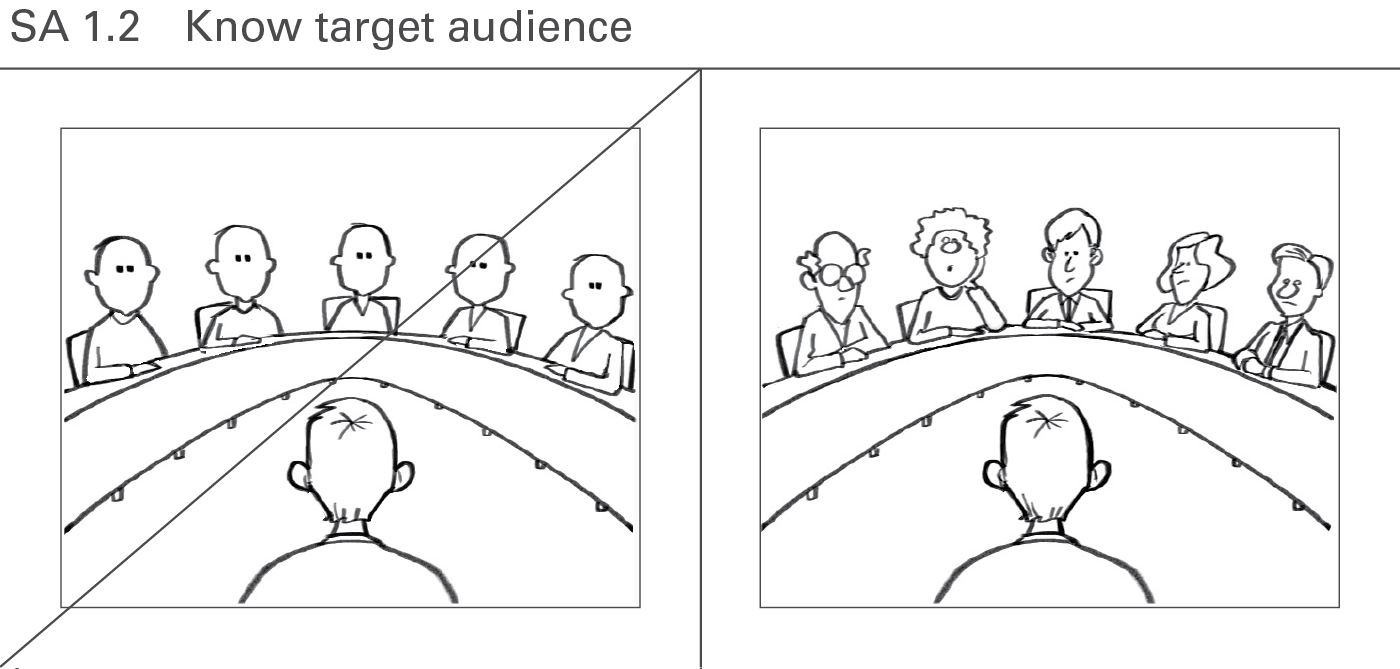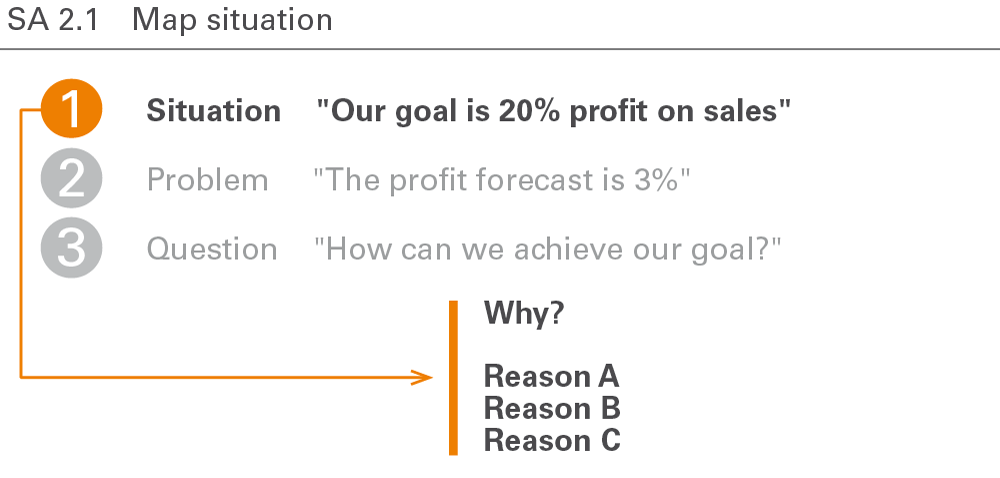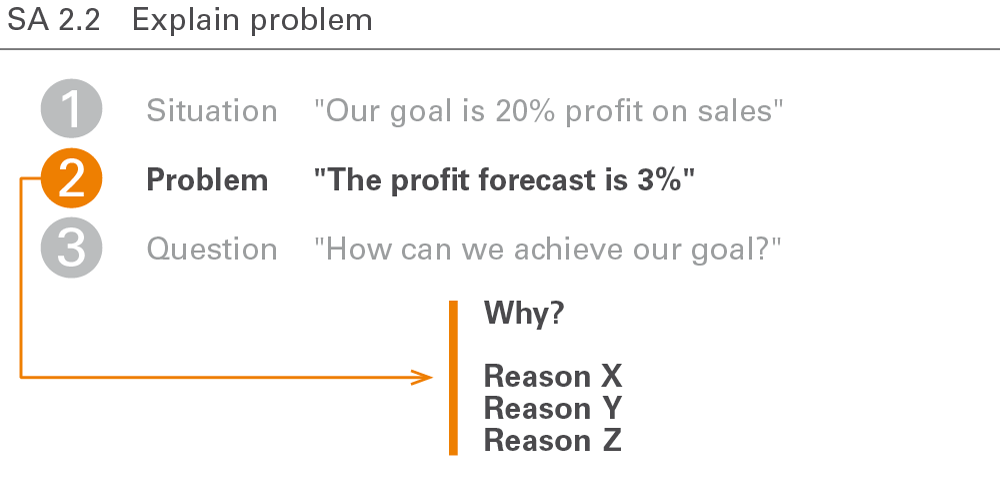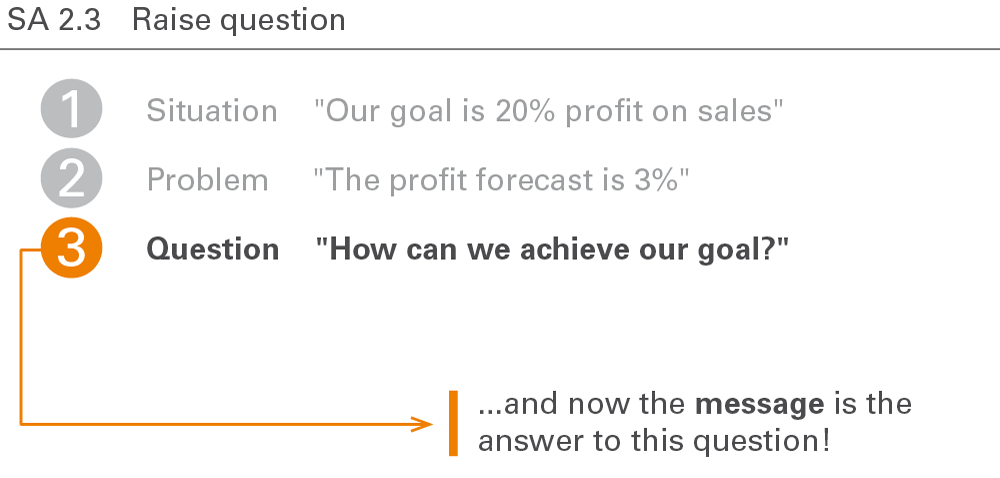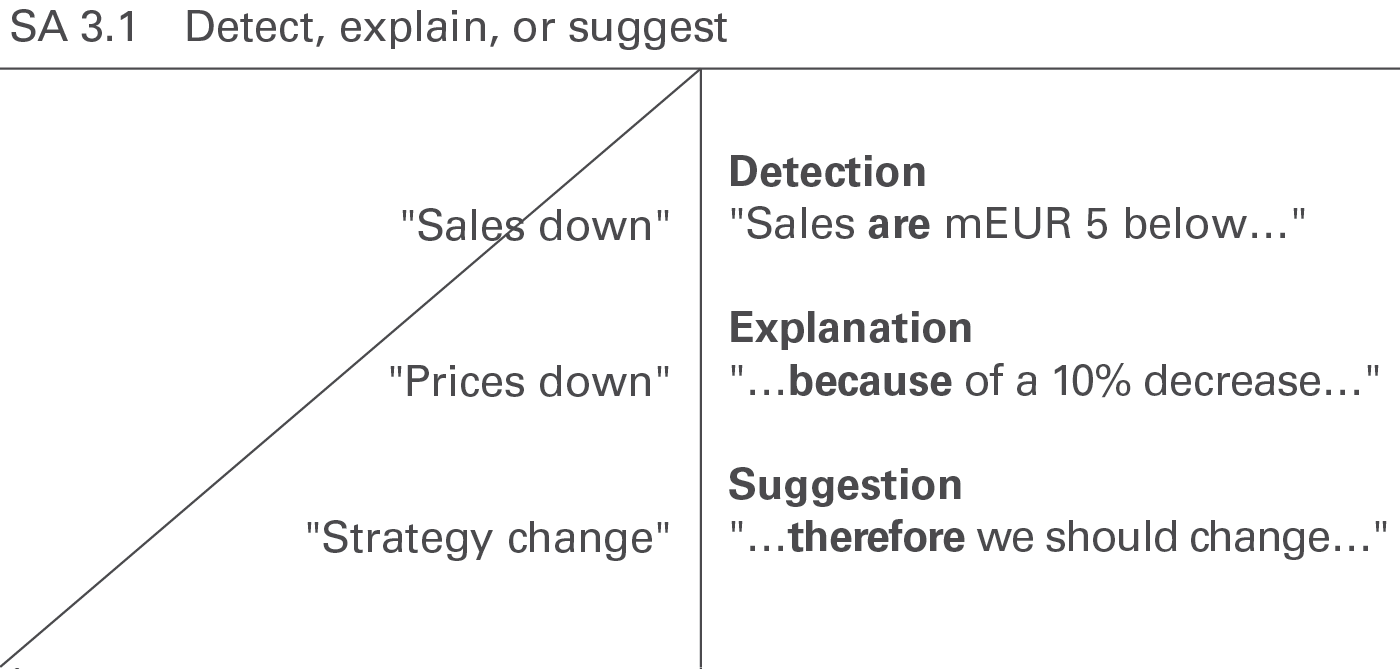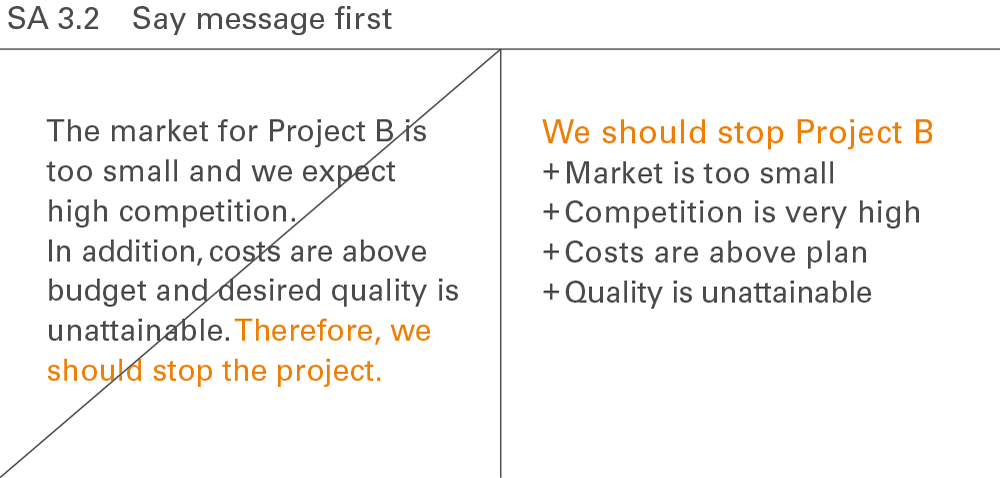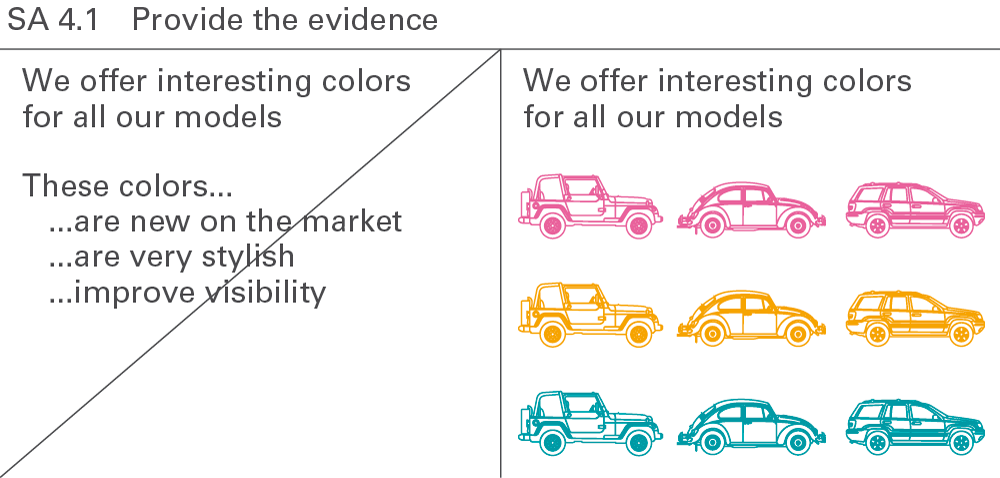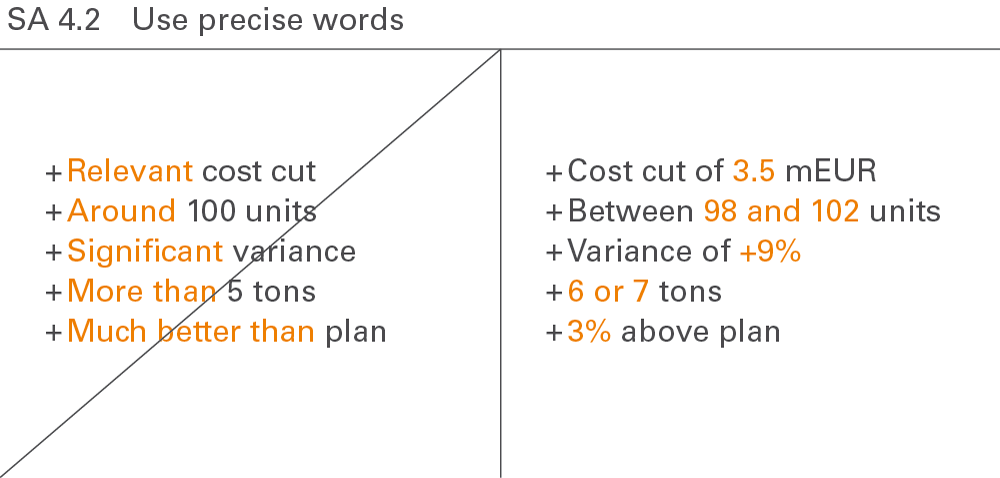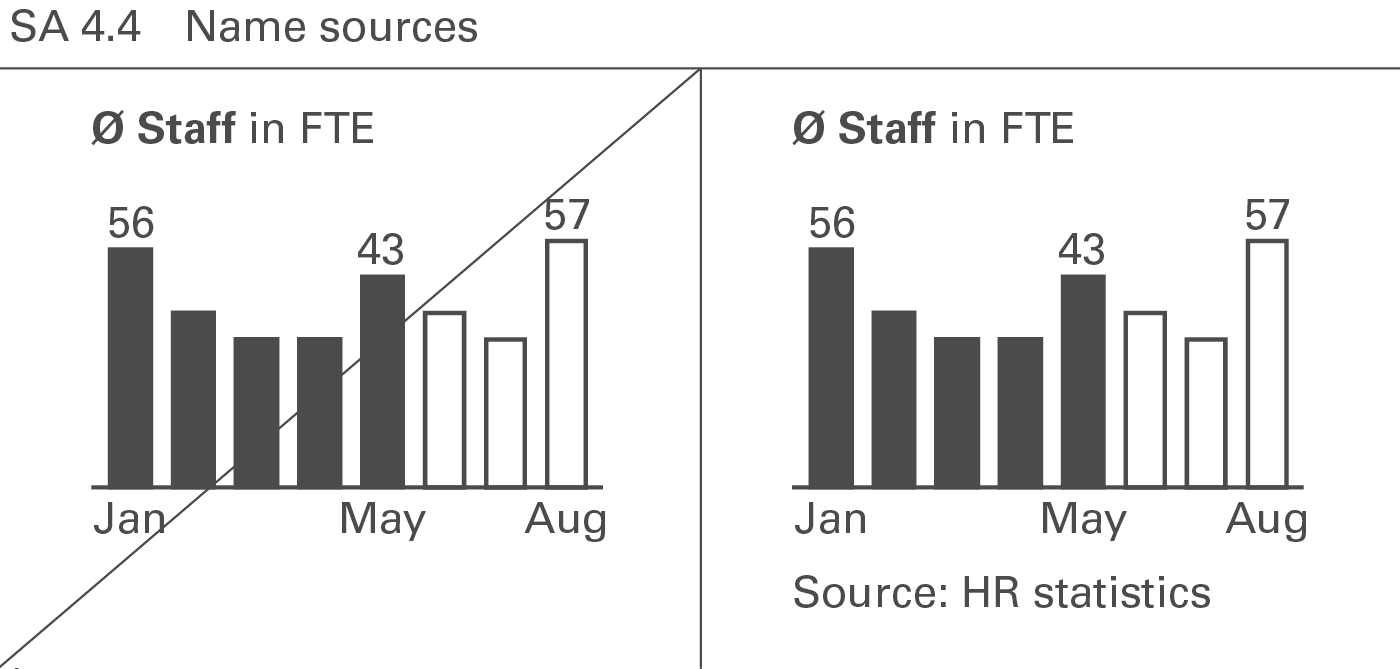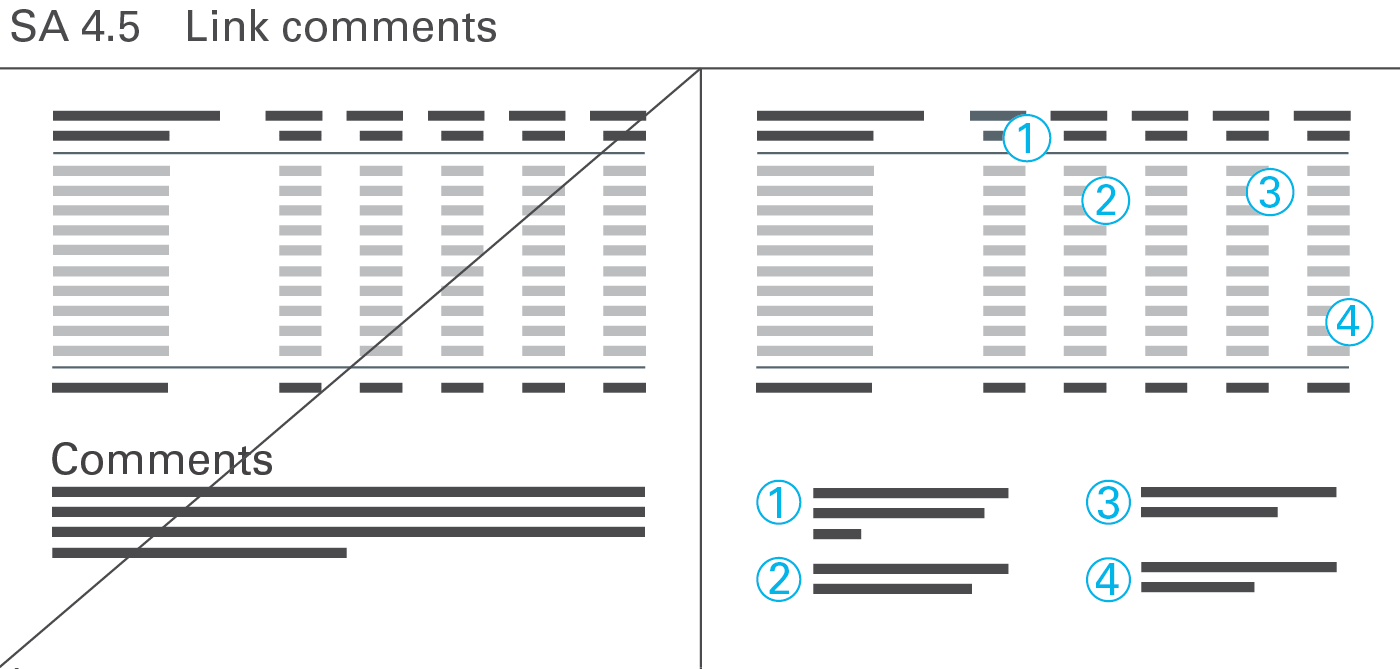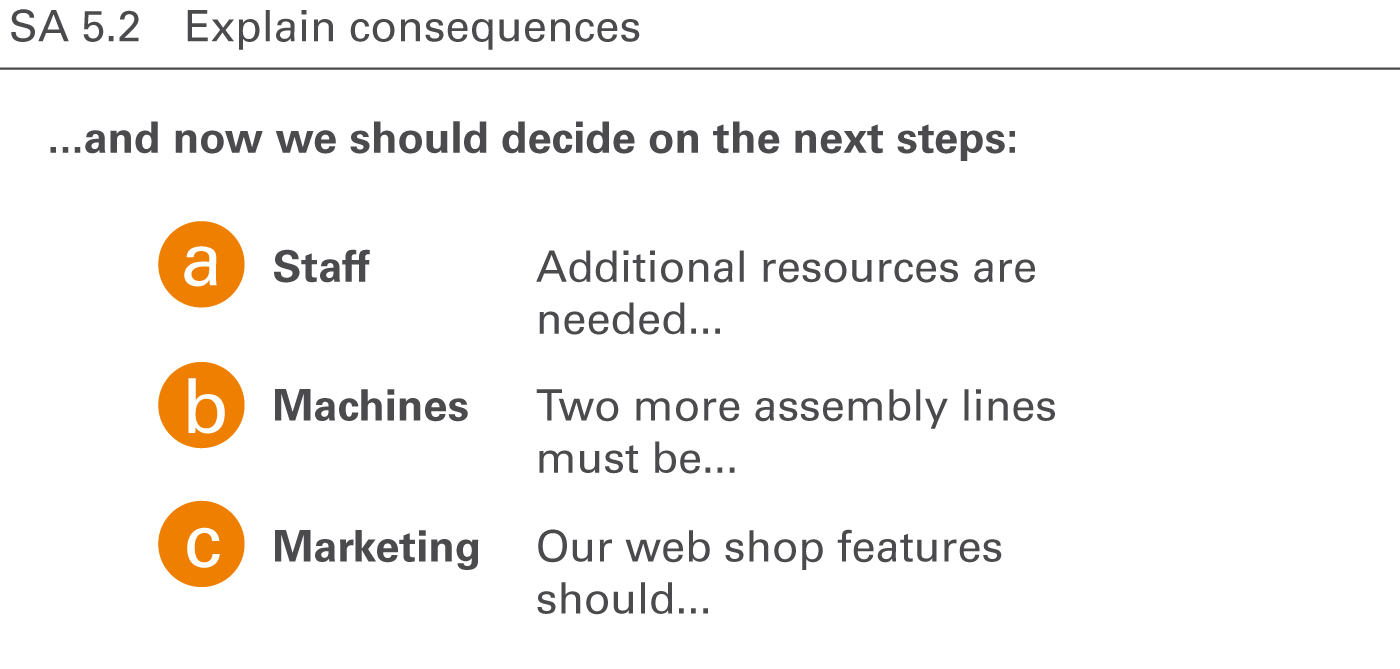8.3 KiB
SAY – Convey a message
SAY covers all aspects of conveying messages to the recipients of reports and presentations.
Conveying messages means that reports and presentations, both as a whole as well as within their individual components, intend to say something to the recipients. Messages in this sense can be determinations, explanations, clarifications, recommendations, and other forms of statements.
This chapter covers introducing, delivering, supporting, and summarizing messages with respect to the objectives of senders and receivers.
SA 1 Know objectives
Good reports (presentations) successfully achieve both the goals of the writer (speaker) and of the readers (audience).
SA 1.1 Know own goals
Do not start creating a report or presentation without a clear vision of what to achieve with it. The least goal is to inform about an interesting detection. A higher goal is to make the reader (audience) understand a problem by explaining it. The ultimate goal is to get a decision on a suggestion provided and to cause corresponding actions.
SA 1.2 Know target audience
A good report (presentation) will try to answer the questions of the readers (audience). So it is important to know the target audience (e.g. their function, position, network, knowledge, experience, attitude, behavior, worries, cultural background) and their goals, preferences, and expectations. Do they only want to get informed about interesting detections, or are they looking for an explanation to a problem? Are they willing to make decisions and to act accordingly? Who might object to the message and why?
SA 2 Introduce message
The addressees appreciate an introduction mapping the actual situation followed by an explanation of the given problem. Raising a question will focus on the given message.
SA 2.1 Map situation
Mapping the situation means compiling and presenting the related facts. Be sure to cover all relevant aspects and obtain a general consensus concerning the facts. In general, this means not yet describing the given problem but presenting facts and goals already known to the reader or audience. It is advisable to begin with a positive and generally accepted description of the situation in order to prevent early contradictions.
SA 2.2 Explain problem
After mapping the situation, introduce the challenge or complication, affecting the reader or the audience. It should make everyone aware of an interesting, critical, or even dangerous problem.
SA 2.3 Raise question
A good introduction raises the relevant question from the perspective of the recipient of how to solve the complication in the described situation. The question at the beginning of each report or presentation then leads to the message, i.e. the answer to the question.
SA 3 Deliver message
Delivering the message means answering the question asked at the end of the introduction. Messages detect, explain, or suggest something the report or presentation later explains in detail.
SA 3.1 Detect, explain, or suggest
Messages in reports and presentations can detect, evaluate, explain, warn, complain, threaten, excuse, suggest, or recommend something interesting. Make sure to deliver these messages in a complete sentence in order to be understood.
Today, many messages in business reporting are pure detections. Since detections are statements that can be checked whether they are true or false, they should be formulated as precisely as possible.
Explaining the reasons for a detection (explanation) or even deriving a suggestion on how to solve the problem or at least on how to further proceed can add value.
This figure shows a classification of messages with examples from the business environment (Source: Hichert, R. and Kornwachs, K.)
SA 3.2 Say message first
Every report, every presentation, and every single page or exhibit can be summed up with a clear overall message. This message usually comes first and is proven afterwards. For the readers or the audience it is more difficult to follow the storyline if the message comes at the end.
Be cautious applying this rule in presentations (not in reports) with bad, unexpected, or unpleasant messages (e.g. layoffs) or in a cultural environment, where directness is considered impolite.
SA 4 Support message
Supporting the message covers some technical and practical aspects of message conveyance.
SA 4.1 Provide evidence
Substantiate the message in order to prove the message by facts and figures. If possible, a presentation slide should itself explain or prove the speaker’s message and not – as very often seen in practice – be explained by the speaker. This can be done by spoken sentences possibly supported by charts, tables, and pictures.
SA 4.2 Use precise words
The more unambiguous the language, the clearer the message. Only precise words will be understood. Speaking about “relevant” or “significant” (in common speech, not as a statistical term) content leads to misinterpretations and misunderstandings. Speaking about facts and figures will prevent them.
SA 4.3 Highlight message
Visually highlight messages in the communication objects presented – namely in charts, tables, graphs, and pictures. This facilitates comprehension and reduces the time needed to understand complex situations. In most cases, it should be possible to highlight the important parts of the content by underlining the most important facts or emphasizing interesting details. Objects and pages without highlighting indicators tend to be a statistic rather than a report.
SA 4.4 Name sources
Naming sources for the material presented increases the credibility. Projected slides can omit them but written reports and handouts must include them.
SA 4.5 Link comments
Use comments in written reports and handouts to add explanations, conclusions, and similar statements. Projected slides in presentations rarely need any comments because the comments are given by the speaker.
Number comments related to specific parts of a page (e.g. words, numbers, or visualization elements) and link them to the respective parts. Post numbered comments in text boxes on free areas of a page. General comments concerning the whole page are not numbered. Post them as a footnote at the bottom of a page.
SA 5 Summarize message
Conclude a presentation with the overall message, including the next steps and an explanation of the consequences.
SA 5.1 Repeat message
Avoid the phrase “Thank you for your attention” at the end of a presentation. Instead, presenters should briefly sum up their message one last time – in one sentence, if possible. At the conclusion of a successful presentation, the audience will be thanking the presenters for the information. Repeating the message from the beginning of a presentation at the end helps the audience check the quality of the storyline and brings the presentation full circle. In reports, on the other hand, such repetition is not necessary as the reader can quickly browse back to the respective summary at the beginning.
SA 5.2 Explain consequences
Conclude reports and presentations with proposals for decisions to be taken and an explanation of their consequences. This is the real objective of a presentation: Convince the audience of both the message and the suggested steps to be taken next.
